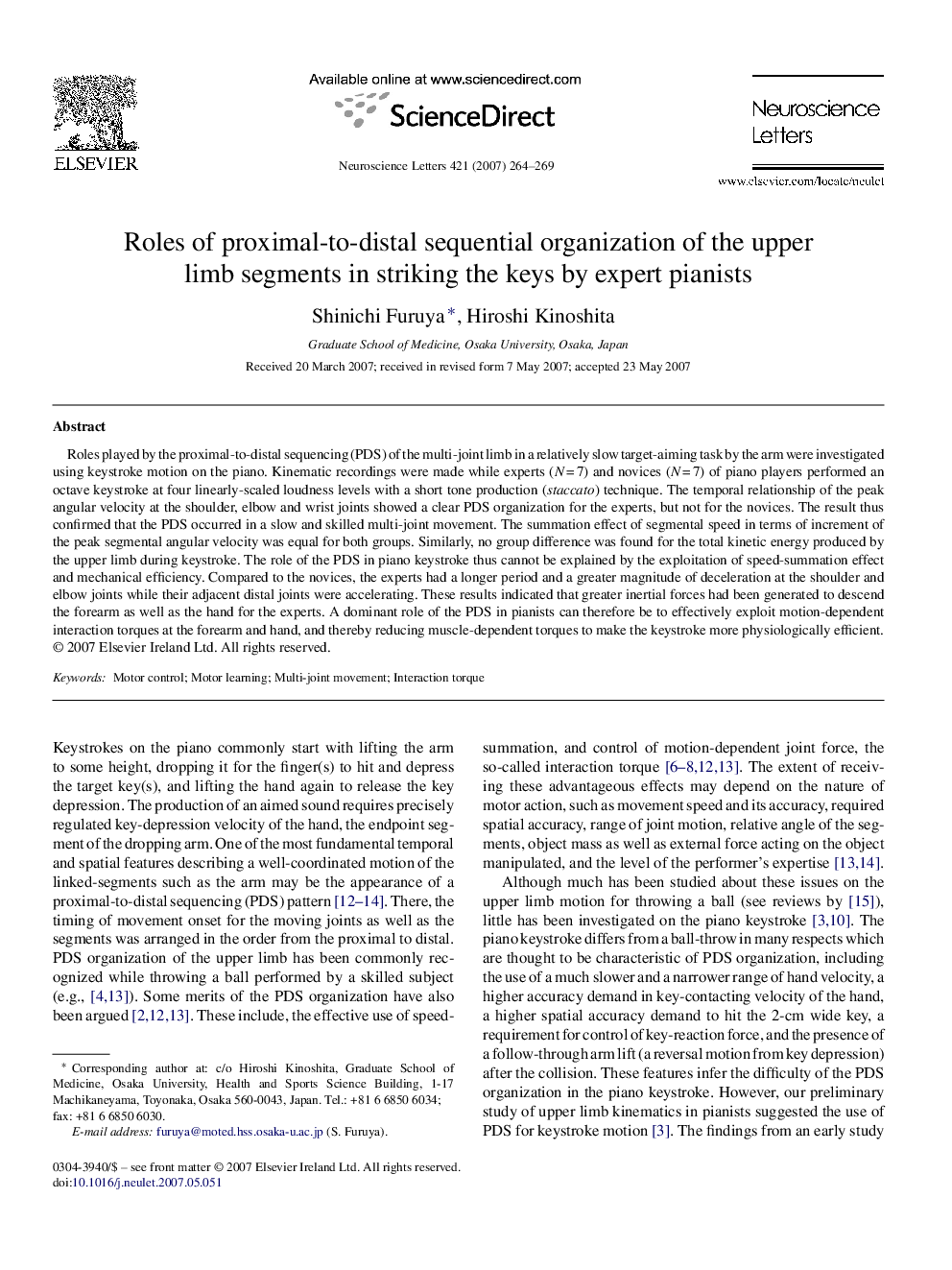| کد مقاله | کد نشریه | سال انتشار | مقاله انگلیسی | نسخه تمام متن |
|---|---|---|---|---|
| 4349298 | 1296934 | 2007 | 6 صفحه PDF | دانلود رایگان |

Roles played by the proximal-to-distal sequencing (PDS) of the multi-joint limb in a relatively slow target-aiming task by the arm were investigated using keystroke motion on the piano. Kinematic recordings were made while experts (N = 7) and novices (N = 7) of piano players performed an octave keystroke at four linearly-scaled loudness levels with a short tone production (staccato) technique. The temporal relationship of the peak angular velocity at the shoulder, elbow and wrist joints showed a clear PDS organization for the experts, but not for the novices. The result thus confirmed that the PDS occurred in a slow and skilled multi-joint movement. The summation effect of segmental speed in terms of increment of the peak segmental angular velocity was equal for both groups. Similarly, no group difference was found for the total kinetic energy produced by the upper limb during keystroke. The role of the PDS in piano keystroke thus cannot be explained by the exploitation of speed-summation effect and mechanical efficiency. Compared to the novices, the experts had a longer period and a greater magnitude of deceleration at the shoulder and elbow joints while their adjacent distal joints were accelerating. These results indicated that greater inertial forces had been generated to descend the forearm as well as the hand for the experts. A dominant role of the PDS in pianists can therefore be to effectively exploit motion-dependent interaction torques at the forearm and hand, and thereby reducing muscle-dependent torques to make the keystroke more physiologically efficient.
Journal: Neuroscience Letters - Volume 421, Issue 3, 29 June 2007, Pages 264–269